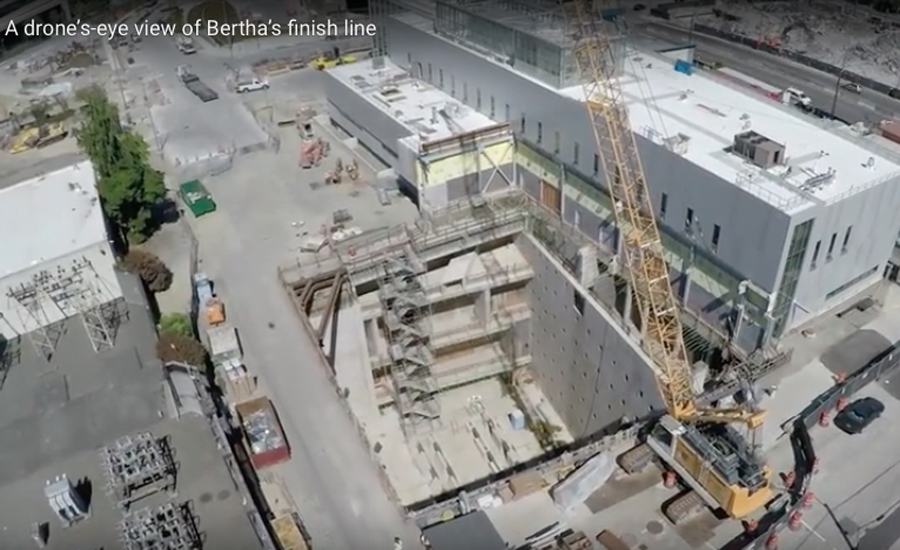Halfway never looked so impressive. Or felt so relieving. After years of struggles with Bertha, the world’s largest diameter tunnel boring machine, resulting in a roughly three year delay and $220 million cost overrun on a plan to replace Seattle’s aging Alaskan Way Viaduct with a bored downtown tunnel, the project has hit the halfway point of the dig.
The total dig of 9,270 ft will allow the Washington State Dept. of Transportation to rip down the viaduct in lieu of a two-level roadway inside the tunnel. As of Friday, Sept. 30, Bertha pushed past that halfway mark, fittingly located below Seattle’s famed Pike Place market. The total excavation of more than 4,365 ft includes 3,000 ft since leaving a planned maintenance stop on April 29 that sent the machine under the viaduct.
I chronicled an in-depth look at Bertha’s recent progress in an ENR print feature releasing this week.
Bertha now sits about 190 ft beneath First Avenue and between Pike and Pine streets and, according to contractor Seattle Tunnel Partners, crews will continue mining a short time—likely a few days this week—before stopping to perform approximately one month of planned maintenance.
“Bertha has been steadily on the move and made her way to the second half of the tunnel,” says Gov. Jay Inslee in a statement. “This is good progress and I appreciate everyone’s focus on making sure we safely complete this project.”
The finish line sits ready for Bertha. A 90-ft. receiving pit near Thomas Street at the north end of downtown—and near the Space Needle—has been completed. And while future contractors will make final connections to the highway, several of the ramps and roadways into and out of the tunnel are already in place, along with tunnel operations buildings at each of the portals.
“This program turned a corner earlier this year,” Roger Millar, secretary of transportation, says in a statement. “We’re now closer to the end of the tunnel than we are to the beginning, and everyone on the team is working toward the day when the machine comes out the other side.”
As Bertha moves forward through the tunnel, crews follow behind to construct the double-deck highway inside. Check out my feature story in the upcoming print edition of ENR for a full look at Bertha’s progress, ongoing maintenance of the machine and the work that trails the powerful tunnel boring apparatus.
The most updated schedule has tunneling wrapping in summer 2017 and a late 2018 finish on the installing and testing of systems within the tunnel. If that model holds in place, state transportation officials hope to start moving traffic through the new tunnel in early 2019.
For now, though, the halfway point proves both impressive and relieving.
Follow Tim Newcomb on Twitter at @tdnewcomb.


Post a comment to this article
Report Abusive Comment